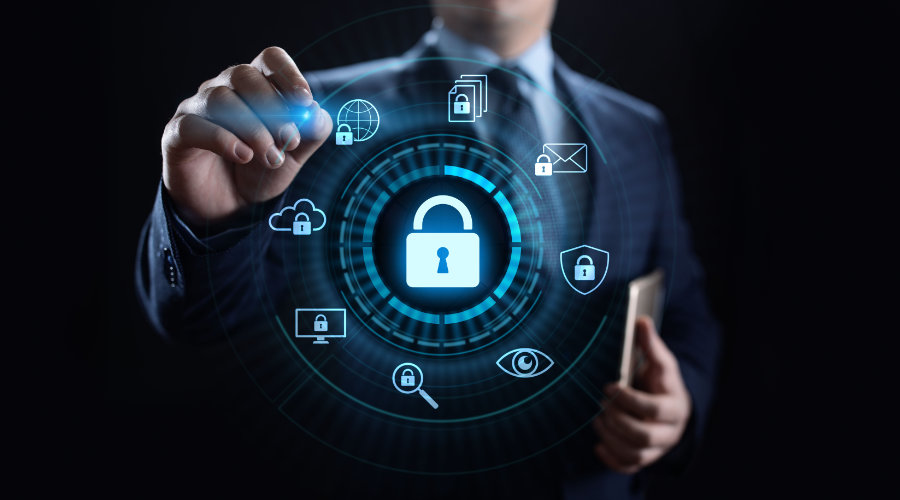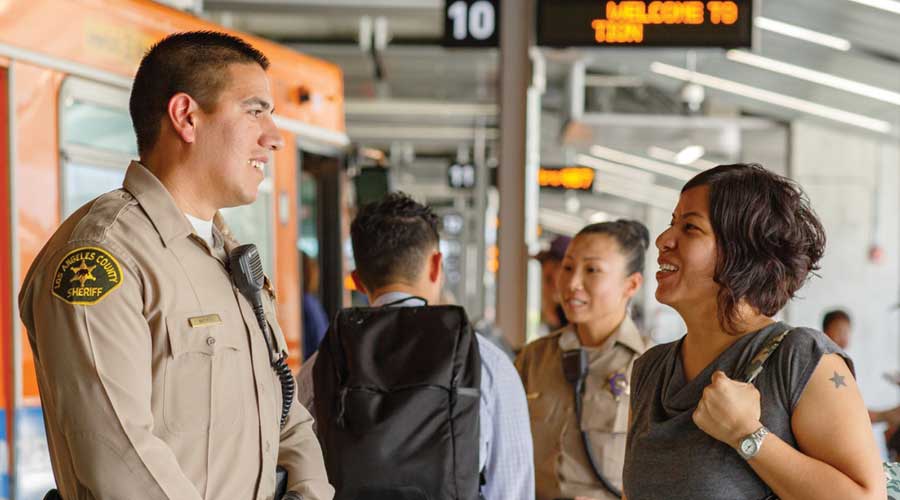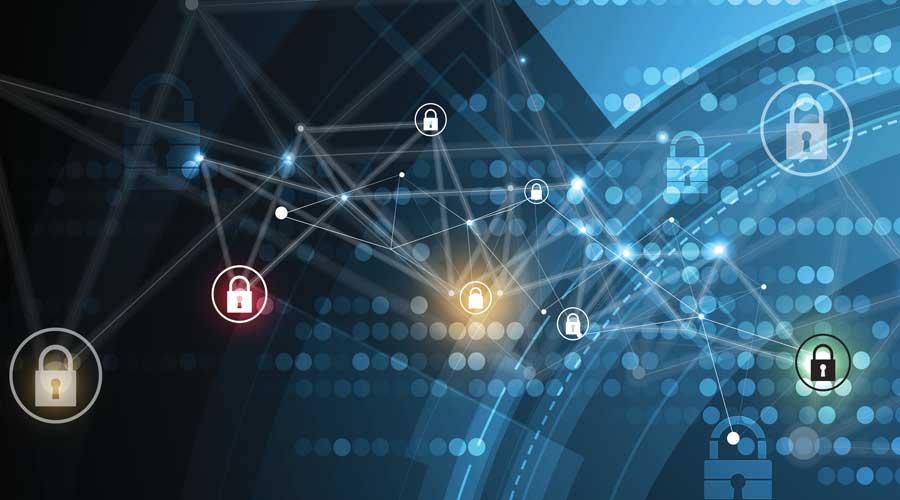Stay updated on news, articles and information for the rail industry
March 2017
Rail News: Security
Transit-rail agencies seek next steps in using data to protect riders

— By Julie Sneider, Senior Associate Editor
Transit-rail agencies in recent years have been using data and Internet of Things (IoT) principles to address certain safety and security challenges.
For instance, they've installed video systems on locomotives and inside the cabs to capture data that might be used after train derailments, crossing incidents or other safety-related mishaps. Video technology also has been used at passenger-rail stations to catch fare evaders or other criminal activity.
As a result, transit-rail agencies have collected a lot of data that typically isn't accessed and evaluated until after an event occurs and an investigation is underway. Now, some agencies are considering how they can use that data to further protect their passengers and assets from harm. One way is accessing the data remotely and turning it into real-time information that railroad operators and security personnel can use to prevent accidents or criminal activity from occurring on trains or in stations, says Larry Jordan, president and chief technology officer at Wi-Tronix LLC, which provides remote monitoring solutions for mobile assets in the rail, marine and mining markets.
"There are tens of thousands of systems out there that are recording information, but they don't have remote accessibility," Jordan says. "We provide remote accessibility to get that data. Once it's available, we use artificial intelligence and deep learning both on board the vehicle and in the back office to analyze it and merge it with other information to flag or detect exceptions to conditions."
Last year, Wi-Tronix introduced "Violet," a combined system comprising a vehicle's event recorder, digital recorder and remote-monitoring platform.
"Our product combines all the elements needed to move the customer and the industry from recording the information and using it in a post-investigation situation, to using the information in real time to detect threats and determine if those threats are from criminal activity or from unsafe operations or conditions," Jordan says.
In the future, transit-rail agencies will be able to use video and data analytics to serve as virtual security guards throughout their railroad to detect security threats, he adds.
"Passengers certainly feel more safe if there's a transit security officer on the rail car," says Jordan. "We know it's not practical to have human officers stationed on every car. … But the way the technology is evolving, it will be like having a security guard in every compartment of every rail car."
Among the many ways the Los Angeles County Metropolitan Transportation Authority (Metro) is stepping up security is through the recent installation of a closed circuit TV (CCTV) surveillance center, where security personnel will be tasked with monitoring video and data gathered from the system.
"We're going to use video analytics to monitor those critical safety areas to make sure we maintain restricted access and can respond appropriately," says Metro Executive Officer of System Safety and Law Enforcement Alex Wiggins. "We're also looking at patterns of fare evasion. We've trained our cameras to people jumping turnstiles and using emergency exit gates to enter the system."
Metra will then catalog that data, which will help the agency determine where to deploy its security resources.
Wiggins notes that there’s a strong correlation between individuals who enter the transit system without proof of payment who may also engage in other behavior that could be criminal activity.
"All that activity affects the ridership experience of our paying customers," he says. "By managing and responding better to people who are paying to enter our system, we anticipate a reduction not just in criminal activity, but in the unpleasant experiences felt by our paying customers."
In addition to using data to track fare evaders, Metro recently partnered with the Transportation Security Administration to develop a pilot program that will screen passengers for explosives and other weapons.
Wiggins and other Metro officials are reviewing next-generation screening systems that could be installed on the Metro Red Line and at Union Station in Los Angeles. One company whose products Metro is reviewing is Evolv Technology, which offers a threat detection system that the company's website describes as "an adaptable, open architecture, security platform that combines artificial intelligence (AI) and human IQ to provide unprecedented protection."
The agency is seeking a technology that can accurately screen 600 to 800 passengers per hour so as not to delay their travel schedules.
Similar to a security screening at an airport, the checkpoint system would use low-intensity millimeter wave technology to detect anomalies on a person’s exterior.
"If the anomaly is not organic, the system will pick up and display that image to the operator. Then, of course, law enforcement would interdict if something needs to be investigated further," Wiggins says.
Metro is seeking a portable screening system that can be moved for use at gates, on platforms and at building access points.
"Our ultimate goal over the next several years is to continue to test technology so that when we need to deploy random screening, we can do it in a way that’s efficient and doesn’t interfere with our customers' travel plans, but at the same time helps keep us all secure," adds Wiggins.
Email questions or comments to julie.sneider@tradepress.com.


 LRW Honors Amtrak’s Acheson As Railway Woman Of The Year
LRW Honors Amtrak’s Acheson As Railway Woman Of The Year
 From Editor-In-Chief Foran: Of Gender Equity And Inclusion
From Editor-In-Chief Foran: Of Gender Equity And Inclusion
 Spotlight On Some Of Today’s Rail Safety Products
Spotlight On Some Of Today’s Rail Safety Products
 Women of Influence in Rail eBook
Women of Influence in Rail eBook
 railPrime
railPrime







